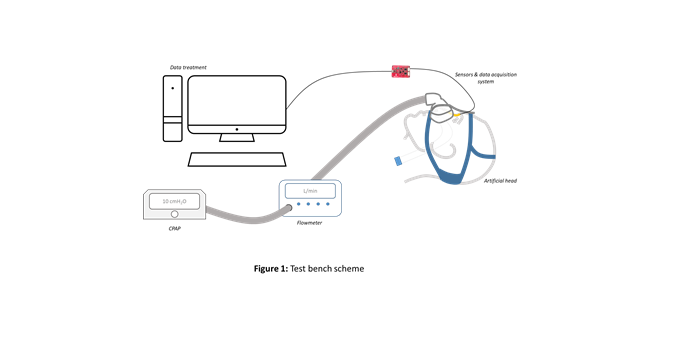Abstract
Objective Mask choice is a key parameter in adaptation of CPAP treatment. Two parameters to evaluate poor mask tolerance are cutaneous over pressure and unintentional leaks. The aim of this study was to characterize each mask thanks to feedback of Health Professionals (HP) who install masks at patient homes.
Methods A pointing area diagram showing a face scheme was submitted to 70 HP. They had to point the areas of cutaneous over pressure and of unintentional leaks for 6 masks according to their installation experiences.
Results Out of 396 analyzed diagrams, positions of each reported point were analyzed (Fig 1). For facial and nasal masks, nasal bridge was the area with highest pressure points concentration and internal canthus was the area with highest leak point concentration. No significant difference was observed between the number of HP who indicated pressure on the nasal bridge, for the two facial masks (74% vs 76%) and for the two nasal masks (72% vs 63%). On the internal canthus no significant difference was observed between the number of HP who indicated a leak point for facial masks (31% vs 40%), whereas for nasal masks there was a significant difference (61% vs 33%).

Conclusions This original method allowed us to quantify HP individual feedback in order to characterize and compare masks. Such data could be used to help get the best mask choice for patients or develop the most adapted features.